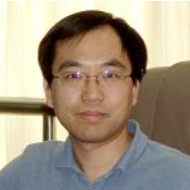
讲席教授 博导 国家级人才项目 国家杰青 国家高层次人才特殊支持计划科技创新领军人才 1989年毕业于北京大学物理系,获理学士学位,1991年获纽约大学物理学硕士,1996年获加州大学伯克利分校生物物理学博士,1996-2000年于加州大学圣地亚哥分校从事博士后研究,2000-2008年任美国匹兹堡大学医学院神经生物学系助理教授、副教授(终身教职),获Burroughs Wellcome Fund Career Award in the Biomedical Sciecnes、Chancellor’s Distinguished Research Award等学术奖。2007年回国组建神经物理学实验室,2008年受聘中科大首批新创讲席教授。 毕国强教授是国际知名生物物理与神经生物学家,在细胞膜修复的生物物理机理、神经突触可塑性计算规则与信号机制、以及神经网络回响活动的细胞动力学机理等方面做出了重要贡献。其关于神经放电时间依赖的突触可塑性(Spike-timing-dependent plasticity,STDP)的发现以及关于STDP的分子细胞机制和计算规则的一系列研究促进了本领域的发展,并在信息科学、人工智能等领域产生了较广泛的影响。在Science、Nature、Nat Neurosci、Nat Biotech、Natl Sci Rev、PNAS、Ann Rev Neurosci等权威期刊发表论文100余篇,被引16000余次,最高单篇被引5000余次。连续入选爱思唯尔中国高被引学者及全球神经科学领域生涯影响力顶尖科学家。 现任合肥微尺度物质科学国家研究中心集成影像中心联合主任。兼任中国神经科学学会常务理事、中国生物物理学会冷冻电子显微学分会委员、中国光学学会生物医学光子学专业委员会常委、国际脑计划组织(International Brain Initiatives, IBI)工作组成员,同时兼任Frontiers in Neural Circuits 国际期刊副主编,以及Current Opinion in Neurobiology、Molecular Brain、Neuroscience Bulletin等期刊编委。主要主持科研项目包括国家重点基础研究发展计划重大研究计划项目、中科院交叉合作团队项目、中科院B类战略性先导科技专项项目、基金委重点项目、重大研究计划集成项目、美国脑计划项目等。
主要研究方向及内容: 神经系统中大量神经元通过突触联结形成的环路体系承载了大脑认知过程的表达和身体生理功能的调控,其结构和活动的复杂性跨越多个时空尺度,是人们理解脑功能原理的重大挑战。神经物理学与生理学实验室通过发展和应用跨尺度显微成像等前沿技术,解析从突触到环路的复杂结构和动态变化,以破译大脑学习的计算规则和生物机制,发现身体器官生理功能调控的基本原理和神经通路,并为理解相关疾病机理、发展诊疗新技术提供新的视角。具体研究内容如下: 1、神经系统的跨尺度解析 以亚分子分辨率解析突触联结的分子组织构架与功能状态,以亚细胞分辨率绘制从大脑到全身的介观神经联结图谱,在此基础上建立神经突触和环路的跨尺度结构功能大模型,为理解认知和生理功能机制及相关疾病机理提供精准数据基盘,并进而启发类脑计算和具身智能的结构框架。 2、可塑性与生物学习机制 学习记忆是智能的基础过程,依赖于神经突触可塑性变化及其与神经元网络活动相互作用而形成的复杂有序的动态系统。我们综合应用跨尺度成像等多种前沿技术,在离体培养的神经元中探索突触可塑性的规则和细胞机制,并通过活体动物实验发现生物学习的神经环路表达和动力学原理。 3、神经环路解析前沿技术 通过跨学科交叉合作,我们致力于发展与应用解析神经突触与环路结构功能的技术与方法,包括冷冻电镜断层成像(CryoET)、光电关联成像(CLEM)、超高速三维荧光显微技术(VISoR)、超微型头戴式显微镜(TINIscope)和多通道光纤记录(MuFi)等前沿技术,以及基于AI的大数据分析算法。
代表性论文: Xue F, Li F, Zhang KM, Ding LF, Wang Y, Zhao X, Xu F, Zhang DK, Sun MZ, Lau PM, Zhu QY, Zhou PC & Bi GQ. (2024) Multi-region calcium imaging in freely behaving mice with ultra-compact head-mounted fluorescence microscopes. National Science Review 11: nwad294. Li XW, Ren Y, Shi DQ, Qi L, Xu F, Xiao Y, Lau PM & Bi GQ. (2023) Biphasic Cholinergic Modulation of Reverberatory Activity in Neuronal Networks. Neuroscience bulletin 39: 731-744. Bi GQ & Rodal AA. (2022) Editorial overview: Cellular neuroscience. Current Opinion in Neurobiology 76, 102625-102625. Liu YT, Zhang H, Wang H, Tao CL, Bi GQ & Zhou ZH. (2022) Isotropic reconstruction for electron tomography with deep learning. Nature Communications 13: 6482. Xu F, Shen Y, Ding L, Yang CY, Tan H, Wang H, Zhu Q, Xu R, Wu F, Xiao Y, Xu C, Li Q, Su P, Zhang LI, Dong HW, Desimone R, Xu F, Hu X, Lau PM & Bi GQ. (2021) High-throughput mapping of a whole rhesus monkey brain at micrometer resolution. Nature Biotechnology 39, 1521-1528. Liu Y-T, Tao CL, Zhang XK, Xia WJ, Shi DQ, Qi L, Xu C, Sun R, Li XW, Lau PM, Zhou ZH & Bi GQ. (2020) Mesophasic organization of GABAA receptors in hippocampal inhibitory synapse. Nature Neuroscience 23 (12), 1589-1596. Xu C, Liu HJ, Qi L, Tao CL, Wang YJ, Shen ZY, Tian CL, Lau PM & Bi GQ. (2020) Structure and plasticity of silent synapses in developing hippocampal neurons visualized by super-resolution imaging. Cell Discovery 6:8. Wang H, Zhu QY, Ding LF, Shen Y, Yang CY, Xu F, Shu C, Guo YJ, Xiong ZW, Shan QH, Jia F, Su P, Yang QR, Li B, Cheng YX, He XB, Wu F, Zhou JN, Xu FQ, Han H, Lau PM & Bi GQ. (2019) Scalable volumetric imaging for ultrahigh-speed brain mapping at synaptic resolution. National Science Review 6:982-992. Liu YT, Tao CL, Lau PM, Zhou ZH & Bi GQ (2019) Postsynaptic protein organization revealed by electron microscopy. Current opinion in structural biology 54: 152-160. Tao CL, Liu YT, Sun R, Zhang B, Qi L, Shivakoti S, Tian CL, Zhang PJ, Lau PM, Zhou ZH & Bi GQ. (2018) Differentiation and Characterization of Excitatory and Inhibitory Synapses by Cryo-electron Tomography and Correlative Microscopy. Journal of Neuroscience 38, 1493-1510. Fu ZX, Tan X, Fang HQ, Lau PM, Wang XH, Cheng HP & Bi GQ. (2017) Dendritic mitoflash as a putative signal for stabilizing long-term synaptic plasticity. Nature Communications 8, 31. Shim SH, Xia C, Zhong G, Babcock HP, Vaughan JC, Huang B, Wang X, Xu C, Bi GQ & Zhuang X. (2012) Super-resolution fluorescence imaging of organelles in live cells with photoswitchable membrane probes. Proceedings of the National Academy of Sciences. USA 109, 13978-13983. Zhang JC, Lau PM & Bi GQ. (2009) Gain in sensitivity and loss in temporal contrast of STDP by dopaminergic modulation at hippocampal synapses. Proceedings of the National Academy of Sciences. USA 106, 13028-13033. Wang HX, Gerkin RC, Nauen DW & Bi G-Q. (2005) Coactivation and timing-dependent integration of synaptic potentiation and depression. Nature Neuroscience 8, 187-193. Lau PM & Bi GQ. (2005) Synaptic mechanisms of persistent reverberatory activity in neuronal networks. Proceedings of the National Academy of Sciences. USA 102, 10333-10338. Bi GQ & Rubin J. (2005) Timing in synaptic plasticity: from detection to integration. Trends in Neurosciences 28, 222-228. Bi GQ & Poo Mm. (2001) Synaptic modification by correlated activity: Hebb's postulate revisited. Annual Review of Neuroscience 24, 139-166. van Rossum MC, Bi G-Q & Turrigiano GG. (2000) Stable hebbian learning from spike timing-dependent plasticity. Journal of Neuroscience 20, 8812-8821. Bi G-Q & Poo M-m. (1999) Distributed synaptic modification in neural networks induced by patterned stimulation. Nature 401, 792-796. Bi G-Q & Poo M-m. (1998) Synaptic modifications in cultured hippocampal neurons: Dependence on spike timing, synaptic strength, and postsynaptic cell type. Journal of Neuroscience 18, 10464-10472. Bi GQ, Alderton JM & Steinhardt RA. (1995) Calcium-regulated exocytosis is required for cell membrane resealing. Journal of Cell Biology 131, 1747-1758. Steinhardt RA, Bi G & Alderton JM. (1994) Cell membrane resealing by a vesicular mechanism similar to neurotransmitter release. Science 263, 390-393.
招生招聘: 实验室长期招聘具备生物、物理、化学、医学、信息科学等相关背景,对神经科学交叉研究有强烈兴趣的博士后和特任副研究员,同时欢迎对本实验室研究方向感兴趣的本科生前来报考研究生。 联系方式: E-mail: gqbi@ustc.edu.cn 实验室网址:http://neurophysics.ustc.edu.cn/ 电话:0551-63602891 |
